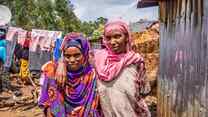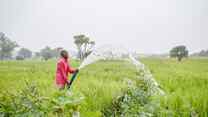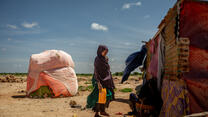Extreme poverty and climate impacts are increasingly concentrated in low-income countries, particularly those experiencing conflict. According to the World Bank’s projections, up to two-thirds of those living in extreme poverty globally will live in fragile, conflict, and violence (FCV) affected countries by 2030, the target year for the fulfillment of the Sustainable Development Goals.
Given 80% of extreme poverty is concentrated in the 13 countries defined by the United Nations as least developed countries, there is an opportunity for IDA resourcing to fill the longer-term gaps that are not currently tackled under the remit of humanitarian response. This opportunity is complementary to accomplishing the Bank’s new mission “to eliminate extreme poverty on a livable planet” and will depend on a replenished and reformed IDA that can finance and deliver results in FCV settings.
Crisis and conflict are robbing 43 million displaced children of the essential building blocks that provide the safety, security, and stimulation they need to thrive. Rising rates of conflict and climate disasters are making school closures and interruptions the norm. The need for reshaping investment in FCV contexts is acutely demonstrated by the neglect of education and child development services in humanitarian settings, which receive between 2-3% of humanitarian aid.
As the IDA replenishment discussions proceed, the Bank must serve as a frontrunner to better navigate, adapt to, and deliver services to children and caregivers in crisis contexts, particularly those most affected by climate change. However, the Bank investment in education and early childhood development (ECD) for FCV settings will not meaningfully reach those most affected by extreme poverty with its current operating model. The “disbursement gaps” reveal the delivery challenges the Bank faces, including the limits of its government-first approach.
The Bank must trial new ways of partnering in conflict-affected countries with non-government actors to reach those left furthest behind. The IRC offers lessons from its program Ahlan Simsim, the largest ECD program in humanitarian response, on how to reach varying population types through government and nongovernment alike; as well as inspiration from the IRC's new program CREST, which connects early-action approaches with parametric climate insurance to increase the volume and speed of funding available for communities affected by climate-related school closures.
Therefore, in complement to achieving IDA 21 reforms, the IRC is calling on the World Bank to:
- Use robust IDA funds to provide long-term financing for the inclusion of displaced populations in least-developed countries’ national education and care systems
- Strengthen its reliance on non government partnerships to improve the reach and delivery of World Bank education and early childhood projects in FCV settings



